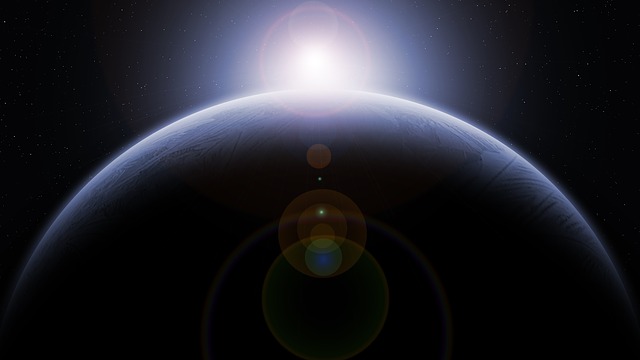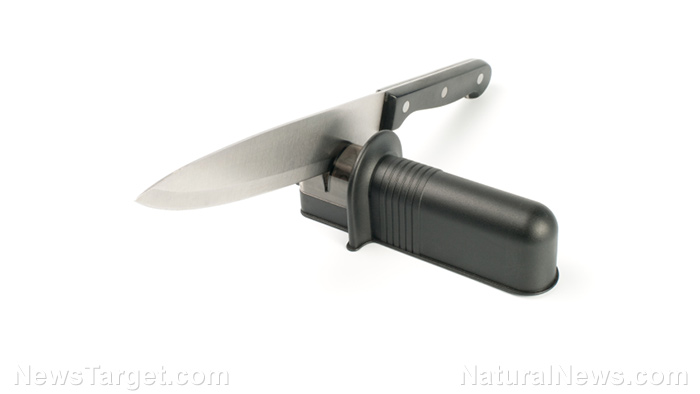Are we under alien surveillance? Physicists say it’s a possibility
09/29/2020 / By Virgilio Marin

Aliens might have already found us, and they’ve been on the lookout ever since.
American physicist James Benford proposes that alien “lurkers” may have set up probes on near-Earth objects (NEOs) that follow an orbital pattern similar to Earth. What’s more, these co-orbitals are very close to us, bound gravitationally not just to the sun but also the planet. But they’ve been able to steer clear of a collision, scot-free throughout all these centuries.
Benford’s bold proposal, which was detailed in the Astrophysical Journal, was an offshoot of an earlier hypothesis put forth by Ronald Bracewell, a radiophysicist at Stanford University who suggested the existence of “hypothetical feelers” in 1960.
Alien lurkers may be observing Earth from NEOs
These hypothetical feelers were autonomous probes dispersed by “superior galactic communities” to monitor and, perhaps, communicate with other life forms. Benford explained that a probe could bide its time while humans try to develop technology that could find it. In the meantime, it’s likely that the probe had only been sending routine reports on Earth back to its host.
Benford, who received his doctorate in physics from the University of California, San Diego, offered a possible answer to where these mysterious “Bracewell probes” might be hiding. “A promising location to search for Lurkers lies among the co-orbital objects, which approach Earth very closely annually at distances much shorter than anything except the moon,” he wrote.
These NEOs share the same orbital period as Earth and can be space rocks, such as asteroids, that have been in place for hundreds to thousands of years. Benford said that co-orbital NEOs provide a strategic location for setting up surveillance as they harbor resources that intelligent alien life might need, such as concealment and a firm anchor. However, he noted that these orbiting objects might also be decoys that are nothing but artificial.
Astronomers have detected only a handful of such co-orbital NEOs. The nearest one to Earth, asteroid 2016 HO3, was just recently discovered. It’s described by NASA as “Earth’s constant companion” and orbits Earth just as it also orbits the sun.
“2016 HO3 loops around our planet, but never ventures very far away as we both go around the Sun,” said Paul Chodas, who oversees the National Aeronautics and Space Administration‘s NEO Program Office at the Jet Propulsion Laboratory.
But Benford is convinced that there’s more to co-orbitals than scientists like to think. He said that exploring these objects should be prioritized in the Search for Extraterrestrial Intelligence (SETI). Astronomers dedicated to SETI can study co-orbital NEOs by observing them using Earth-based space telescopes and by visiting them with probes, said Benford. (Related: Looking at the lunar surface: Harvard scientist believes the moon holds clues about extraterrestrial life.)
A space mission to any one of these NEOs won’t be a terrible thing; according to Science Alert, besides the prospect of finding signs of alien life, it can also provide crucial insights into these obscure co-orbitals, especially since only 20 percent of them have been found. As fate would have it, China recently announced plans to launch a 10-year mission that would include visiting asteroid 2016 HO3, reported Science Alert.
Still, other astronomers are not raising their hopes about any grand alien discovery. Paul Davies, a theoretical physicist and astrobiologist from Arizona State University, who wasn’t involved with the study, thinks it’s extremely unlikely that alien probes are stationed on co-orbital NEOs. But he’s not shutting the door on a mission to these rocks. “Even if we don’t find E.T., we might find something of interest.”
Cosmic.news has more on SETI.
Sources include:
Tagged Under: alien life, alien lurker, alien probes, alien surveillance, Asteroid, China space, cosmic, E.T., Earth, extraterrestrial intelligence, Neo, SETI, Space, Space Mission
RECENT NEWS & ARTICLES
COPYRIGHT © 2017 REAL SCIENCE NEWS


















